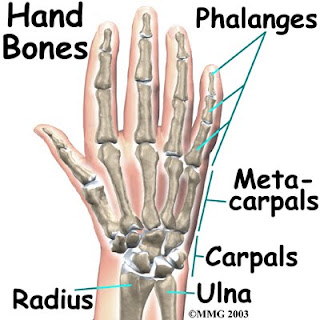mummified human bodies, near skeletons in some cases, with which at least some medieval monks (say) may have been well acquainted.
Yes, mummified skeletons were probably a plentiful commodity in your medieval monastery, if one in Brno (the Czech Republic's second city) is anything to go by. I was one of numerous tourists who visited there some three years ago to see the ghoulish spectacle of more recently mummified monks, still on display.
Capuchin Monastery, Brno
Here, very briefly, is what I think those monks did,. (I'll, er, flesh out the details later). They put one of their long deceased brothers in an oven (bread-baking?) and baked him until he was hot enough to quickly scorch cloth pressed against it. They probably did not have a thermometer, but if they did they would have opted perhaps for somewhere in the region of, say, 250 to 350 degrees Celsius, well below even the dullest red heat at approx. 500C (the max temperature on an electric iron is said to be about 200 -220C, capable of scorching if one's not careful, needless to say).
The crucial next step, omitting details for the moment like hair, blood etc, was as follows. The hot skeleton was laid on the lower half or a 14ft x 3ft length of impregnated linen, which was then doubled back at the head end and rolled back to the feet so that both dorsal and ventral surface were "enshrouded".
The treated cloth would then be monitored closely. In a short while it would have begun to acquire a scorch-like image (I hesitate to say "scorch" for reasons that will shortly become apparent). What's more the image would be comparable to a photographic negative - with a reversal of the light and dark one would see in a portrait or modern photograph. Why? Imagine a prominent (protuberating p) part of the body, say the hands folded over the groin region. They would be closest to the clothand produce a dark brown image, unlike the lighter image in a photo. But the eye sockets, furthest from the cloth, would leave little impression, which is the opposite a photo where they appear dark through being in shade, so to speak.
Starting with a skeleton and the technique described not only accounts for the negative image, and the 3D properties revealed by image analysis (inasmuch as the "subject" is 3D, absorbing radiant heat in inverse proportion to its distance from the shroud) but also explain the claimed X-ray like properties of the image:
See following link for an account of those X-ray like properties
I add a section later on the blood and hair. For the moment, let's address just two extra details. How was the cloth sensitised to scorch superficially in those parts closest to the hot skeleton? Check my 5 or 6 previous posts and you will find one possible method, using linen that had been lightly coated with charcoal slurry ( maybe starch and/or simple sugars too) and then dried. The charcoal acts as a thermosensitiser, absorbing heat rays (infrared), producing a light tanning effect on the part of the cloth in immediate contact with the charcoal. The chemistry might involve caramelisation, or a carbohydrate/protein reaction to form Maillard reaction products). The latter can be washed out later, leaving just the sepia "stencil" and the bemused (overawed) medieval religious pilgrim with no clue as how it was produced. It's a process that I have dubbed thermo-stencilling.
A thermo-stencilled image (see earlier post)
What about the blood on the wrist instead of palms, which some see as lending authenticity to the Shroud (on the grounds that medieval fakers would have assumed like most that it was the palms that had been pierced by nails, rather than the wrists that would seem better able to support weight)?
Well, here's an argument that kills two birds with one stone. Firstly, the metacarpal bones of the hand are highly prominent in the Shroud image, despite being flesh-covered in life, which reinforces my skeleton theory.
But the medieval monks, looking at those metacarpals may have made an all to common mistake in assuming them to be finger bones, so placed their blood below the metacarpals, imagining they were centre- palm, when in fact they were nearer the wrist.
This explanation can account for the image being located on both sides of the cloth, as an exceedingly thin layer, with no intermediate layer. It depends on the cloth having been coated with carbohydrates that are more susceptible to scorching than cellulose, especially reducing free reducing sugars like glucose. Indeed, fruit juice (white grape juice?) may have been used. Again, that "invisible ink" effect.
Yup, this has been hastily written, I freely admit. This retired scientist knows that a new idea should be published quickly, before it becomes someone else's idea... ;-) That's enough for now. More tomorrow.

























2 comments:
Second thoughts re terminolgy: "mummified skeleton" is not quite right, is it? A mummified body or cadaver might be better, but I also wanted to work in the idea that it is partially "skeletonised" in places, notably the metacarpal bones in the hands, enough to give those hints of an X-ray effect that have been suggested.
Still on terminology, I am also having second thoughst about the use of "thermo-stencilling" to describe the proposed mechanism. That term seemed apt when painting moistened charcoal onto fabric, and producing a heat-fax so to speak of the image in the form of selective scorching. But here the proposed technique is different. All of the fabric would be impregnated with sensitizer, whether charcoal or sugars, starches or various cocktails thereof, and the image that forms then depends on the distance between the cloth and the heated object, with conduction as well as radiation playing a part.
I shall now take five, Dave Brubeck style, by way of reviewing the situation, but avoid making myself a hostage to fortune by carefully omitting to specify time units...
Post a Comment